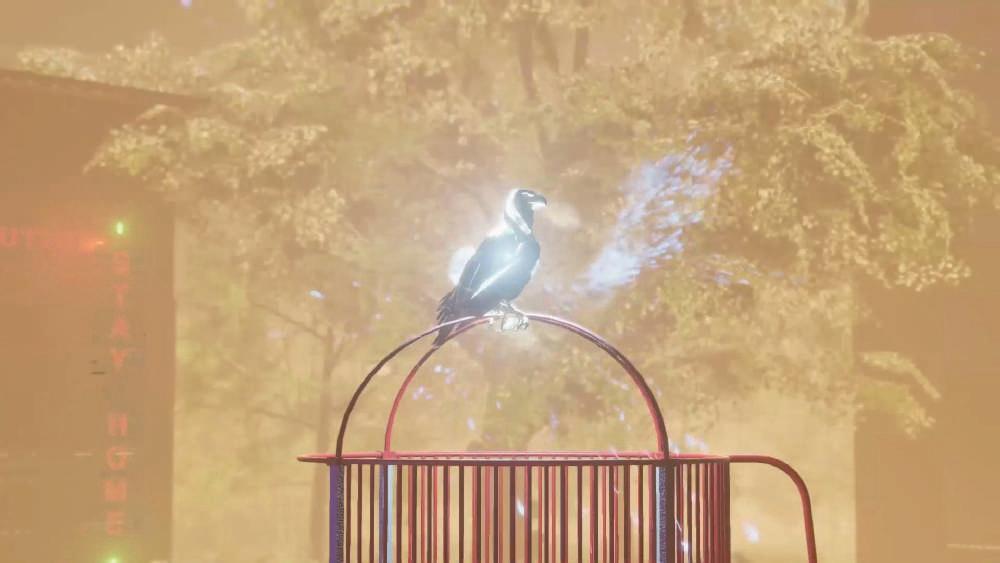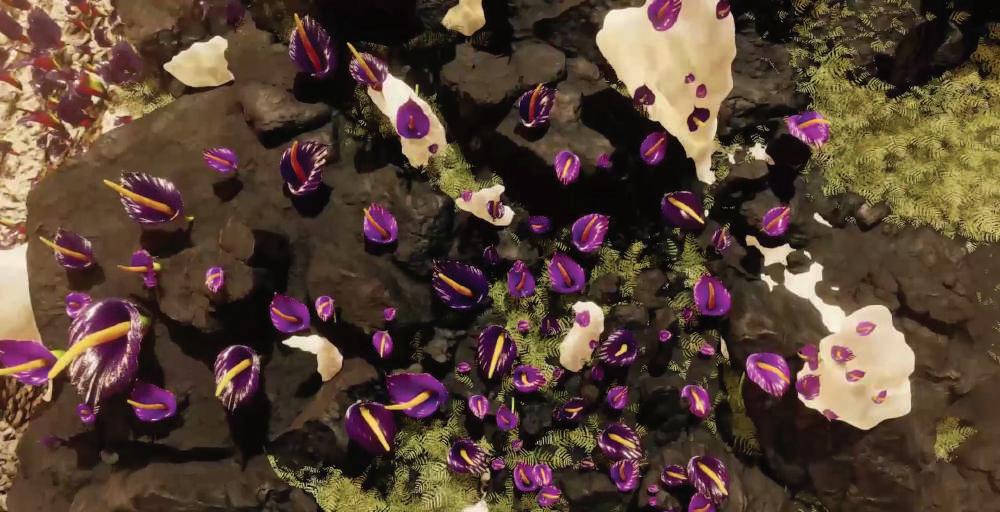
Human tours, 2024/2025
speculative CGI film duration ~ 20min
Commissioned
by
Dimitrije Bašićević Mangelos YVAA fund

This work started forming while I was on a residency in New York, summer of 2024.
The title human tours is a wordplay on the title of a NYC tik toker who is also known as the Rat Daddy by the online community with his Rat tours (for just 50 dollars) around New York. Human tours is a work that not only plays on titles but its meanings within the current global rhetoric. In the work Human tours, rats are the archivists of human (hi)story. For the longest time, there were wars against them (this is why, still, NYC has its own Rat Tzar). I believe there was something that rats mirrored that humans also have, and it is continuously triggering them- The insatiable hunger for sex, pleasure, and evolutionary success.
They have spread with wars and European imperialism to colonized territories in the Americas as well as Africa and Australia. Rats thrive in the trenches of modern warfare even today. There are many things that rats knew before we took them into captivity, to serve as model organisms. This innate knowledge draws through one layer of the film, and is imagining a rat that first heard Traviata being performed in the 1856 in NYC for the first time. Some time later (2013), it was discovered that playing Traviata to rats before open heart surgeries makes for a better survival success.
The work Human tours makes seemingly inconceivable parallels between worlds/spaces and times in rat but also human history. It imagines a world where rats, with the help of their imagination (something that was a recent discovery) tell a story of the capitalist society generated into a CGI film where opera is their mode of expression and appropriation is their tool of habitation through the film. The rat song (Traviata) or rat tour is composed through the lens of the term geontopower (coined by Elizabeth Povinellianthropologist from NYC) by de-constructing the original text and appropriating the main musical theme. The film shows rats as messengers between worlds and times, while playing with the idea of ancestral rat knowledge.
Text/animation/worldbuilding and work:

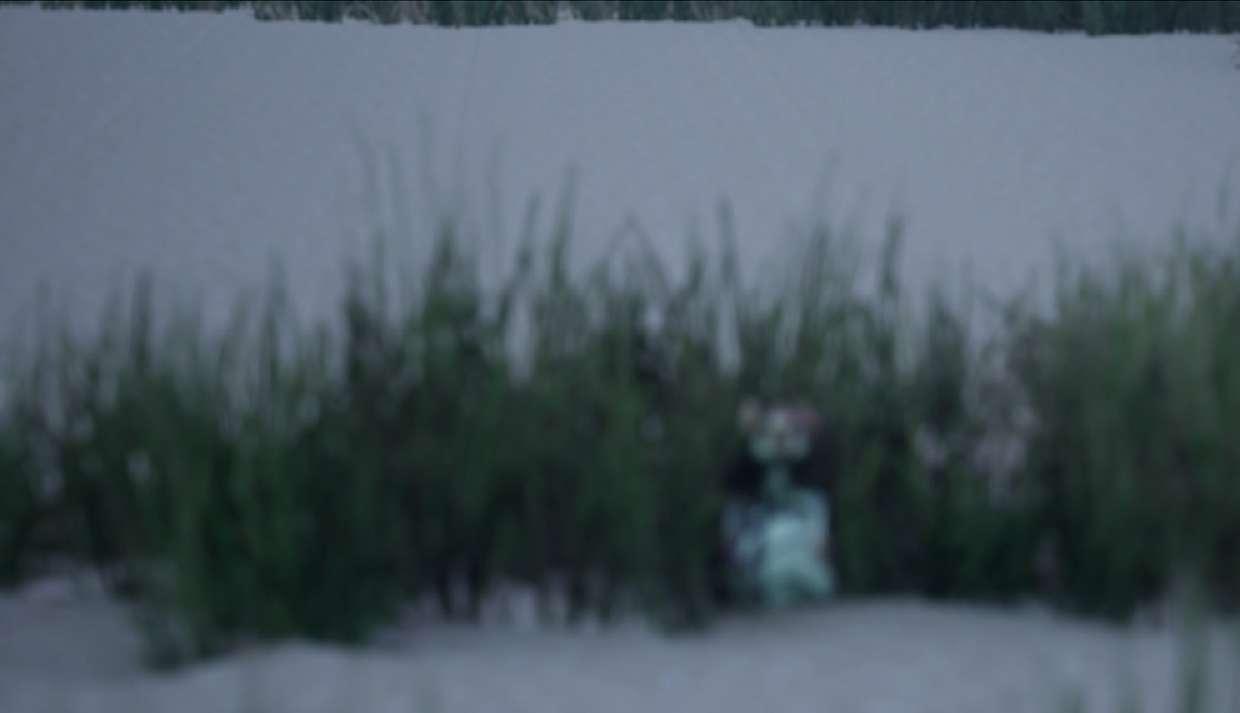
Service dog, 2025
speculative contextual coloring book (20pgs) + audiotape
audio duration: ~ 10min
audio in collaboration with Lav Kovač
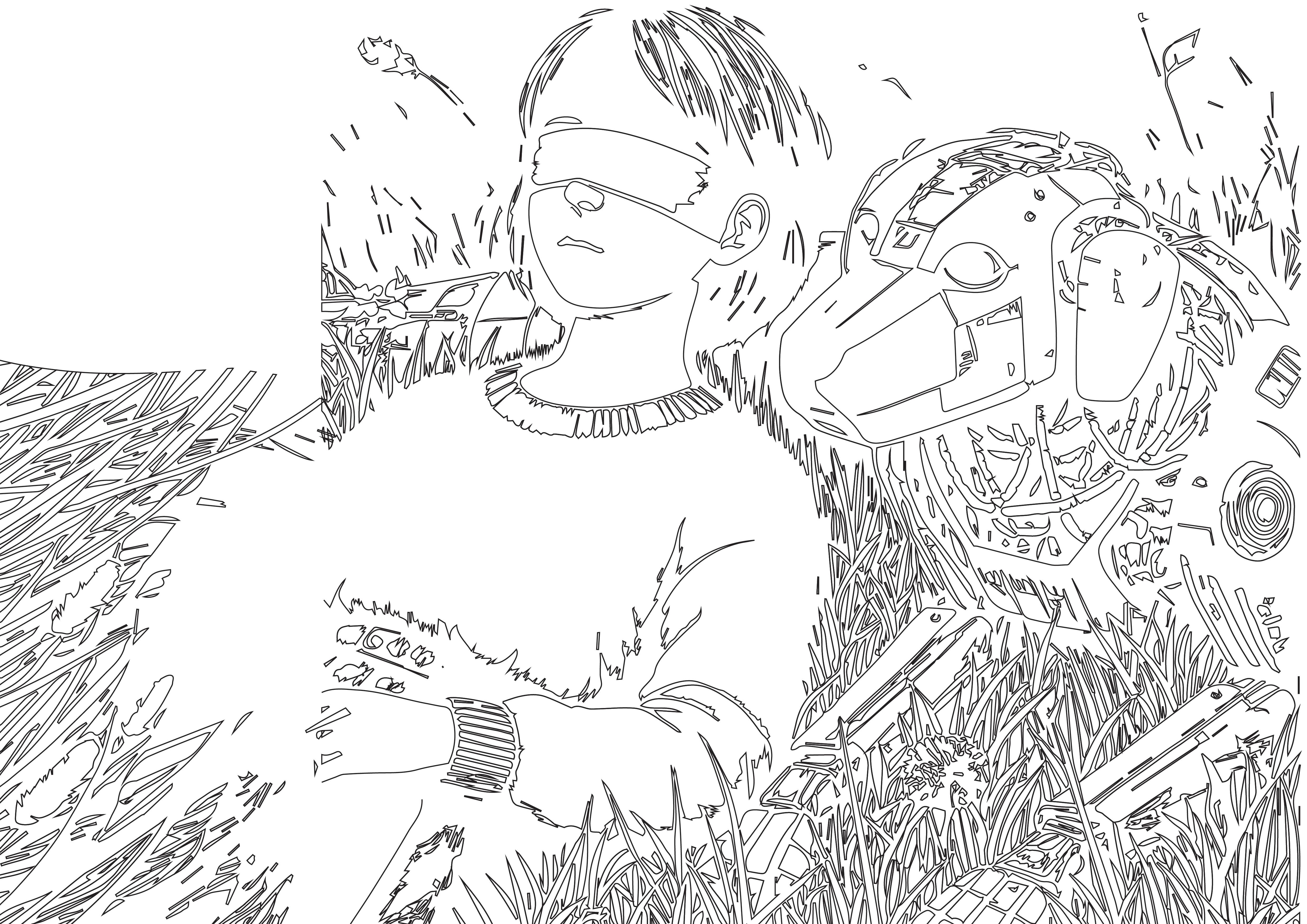
Q-UGV is a term used for the new Ghost Robotics dog (or wolf) look-alike warfare drones. Its users write: “The purpose of the Quad-legged Unmanned Ground Vehicles, or Q-UGVs, is to add extra protection to the base. The robot dogs, designed by Ghost Robotics and Immersive Wisdom, are the first of their kind to be integrated into a military installation and one of many innovation-based initiatives to begin at Tyndall AFB”. The work Service dog examines this extension of a term and the occupation “service dog” represents. With current geopolitical and corporate developments, the metaphor “man’s best friend” or “service dog” takes a different turn. The possible beginning of decentralization of necropolises and warfare mirrors these techno-animistic extensions. The work Service dog uses Dorothy Harrison Eustis and the Story of the Seeing Eye as a historic reference but extends to the present day and looks into new developments around “dog companions”. The work tells a speculative kids’ story in the shape of a coloring book (which was illustrated with an AI that was trained through the Seeing Eye and Jack London’s Call of the Wild texts) about a Q-UGV who, before going into warfare, has to familiarize itself with “unspoiled” human life aka children. The story questions the ability of the AI to learn, understand, or change its mind while being in the position to kill.
audio:to be uploaded...in case od enquiery, will be sent
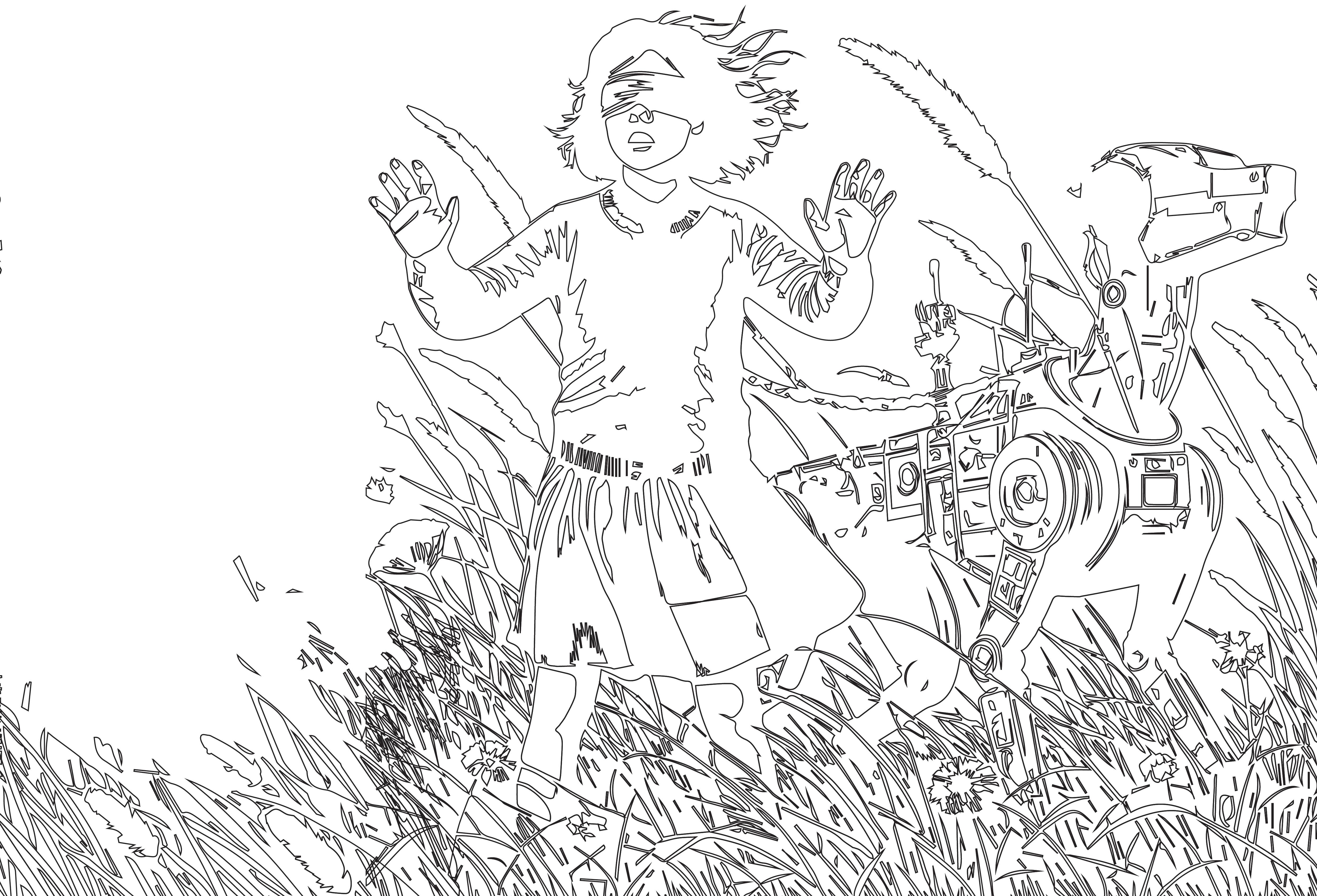
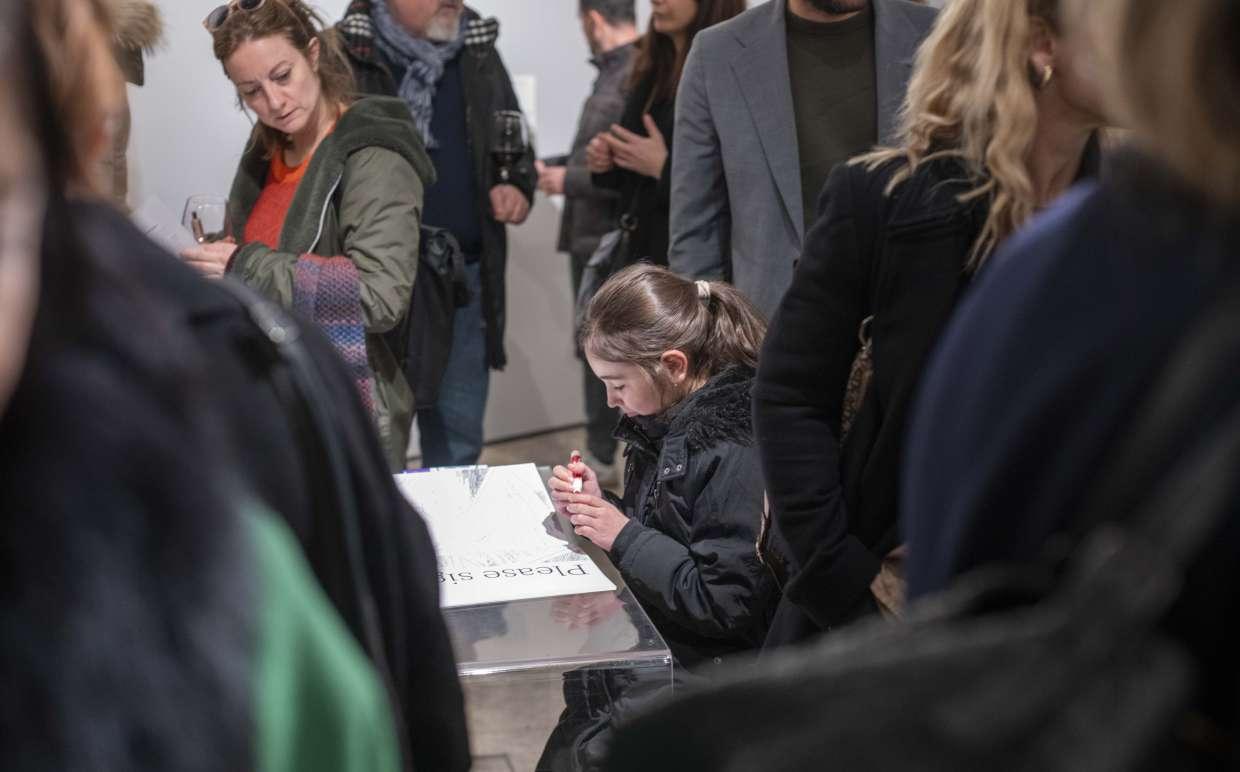
Look up! I am no canopy- I am a messenger, 2022/2023
Cli-fi speculative choral piece/performance
Duration: ~17min
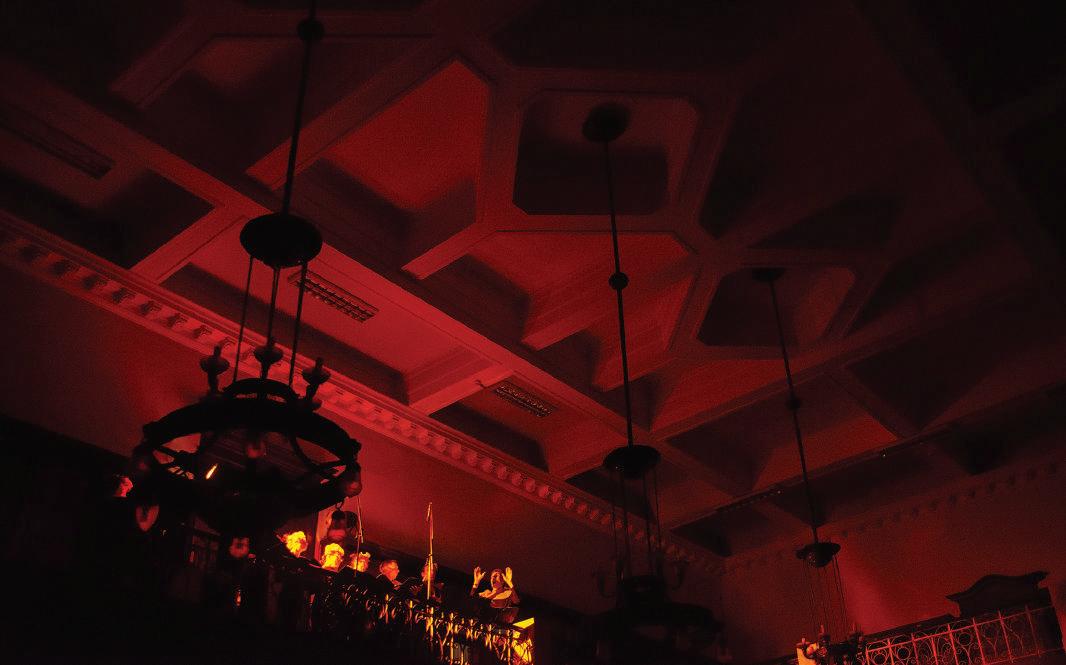
Imagine a tree canopy – you in it. Far above the ground. Sounds of leaves crunching from the wind surround you. It is hot and you have just come out from above the ground. After 17 years spent gathering impressions, sucking on tree roots. You are well rested. Ready to sing. And so you do...coming from the belly of the earth, you bring knowledge. An enchanting yet unknown frequency. You have heard the Earth move. You have inspected it. You bring riddles, speculative prophecies. You would have brought them, if you haven’t been M.I.A.
A heave! Long awaited to be heard.
Look up! I am no canopy - I am a messenger is a work that takes particles of different eras, but also different disciplines. It looks into speculative zoology/ Entomology, but predominantly the historical/biological attributes of Magicicada septendecim while in a parallel manner analyzing an Orthodox chant. The specific brood XI is believed to be extinct since 1954. There were speculations about brood being found again in 1988- these speculations were never confirmed. The work draws a strong reference from a book Insect singers: A natural history of the Cicadas (1929). It creates its own new hybrid myth. An insect-morphic orthodox prophecy. A reincarnation of Brood XI (whose year of coming out from underground would be biologically- historically 2022) who has come to seduce us into an act of courting the world with an act of the most romantic call- giving out the speculative prophecy. Translating a new hybrid myth, from these sentinel species, we bring news of climate- love in the era of scarcity. Now, finally, we are able to understand the frequency. Music and text for this experimental prophecy were written using references from the Orthodox chants, but deconstructed towards a different context, riddle- like, abstract thoughts about climate change, famine, anxieties, etc. Behind every choral composition, there is a myth of our time connected to each “calling/message”.
MYTH BOOK connected to each choral segment: here
trailer: here
full performance documentation: here
My Ph.D. proposal based on the work: here
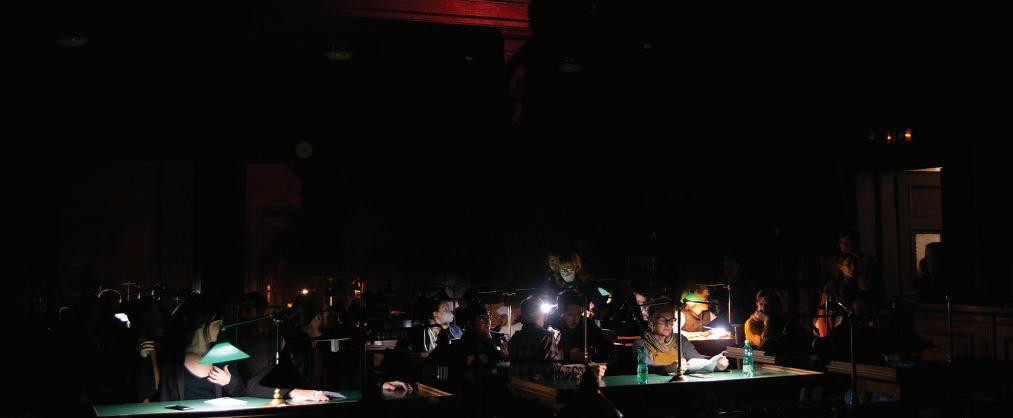
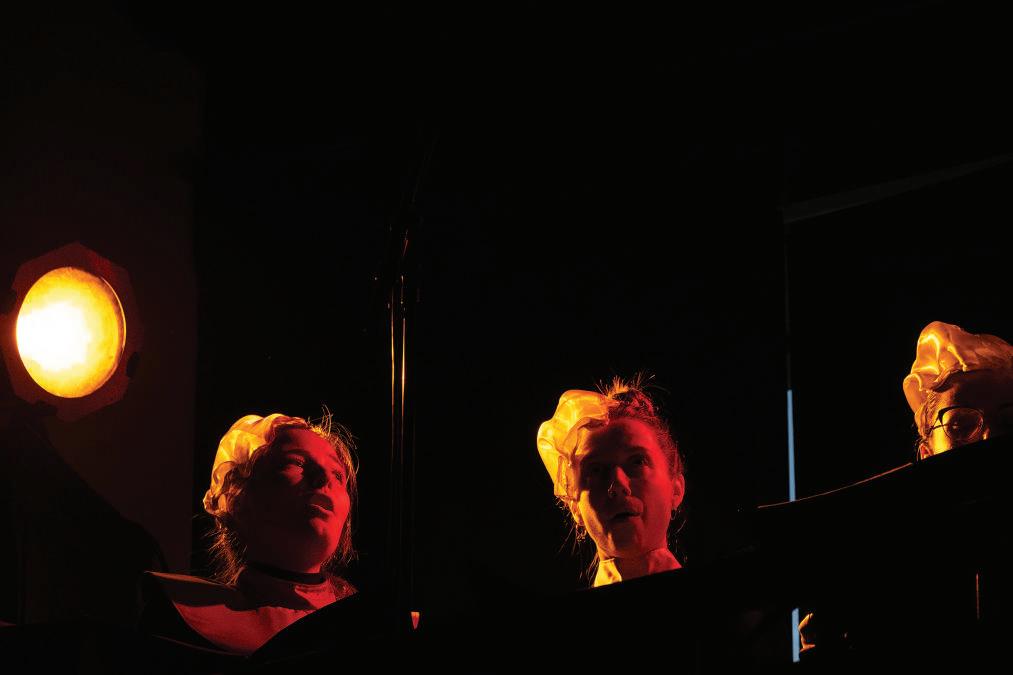


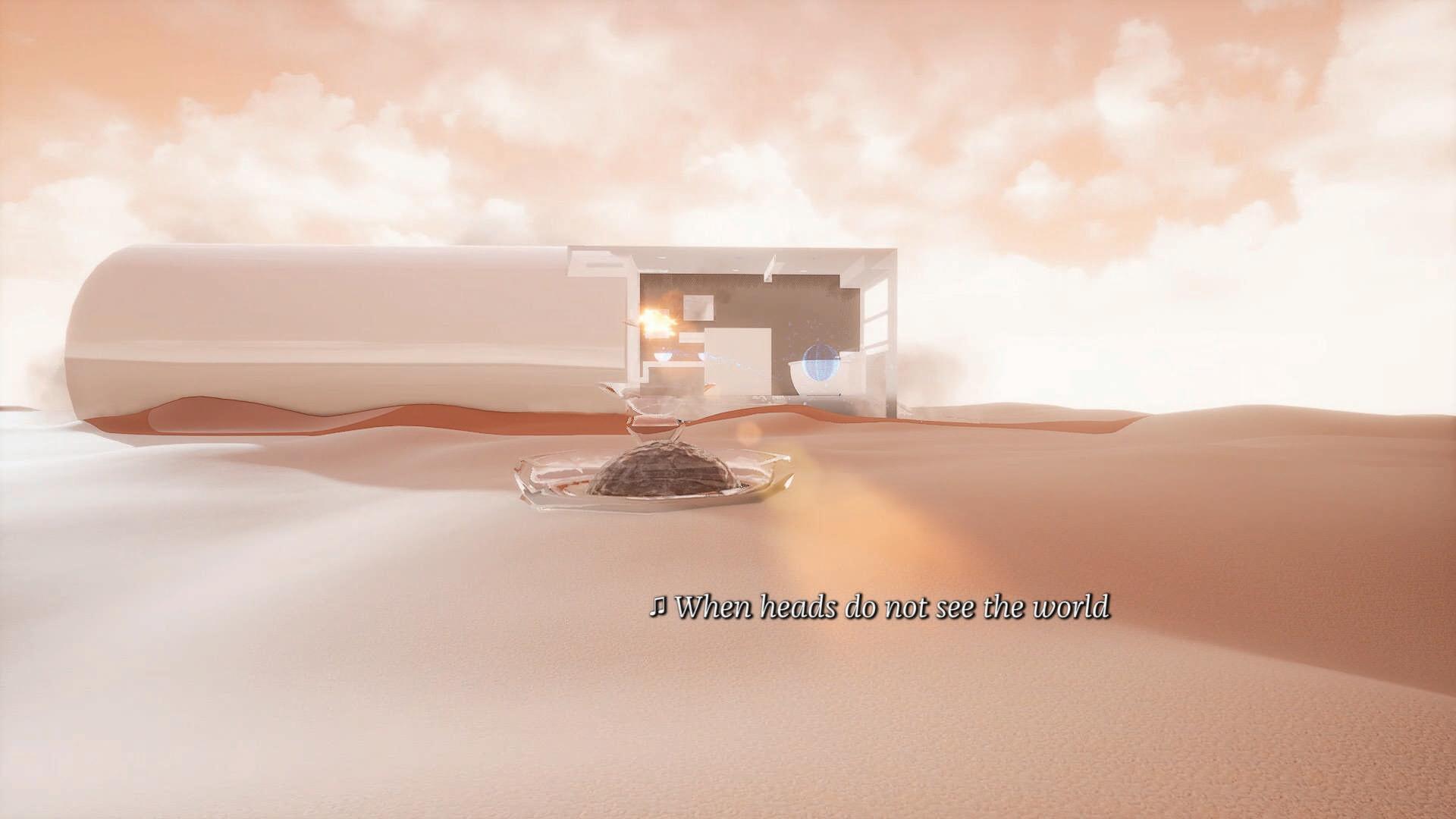
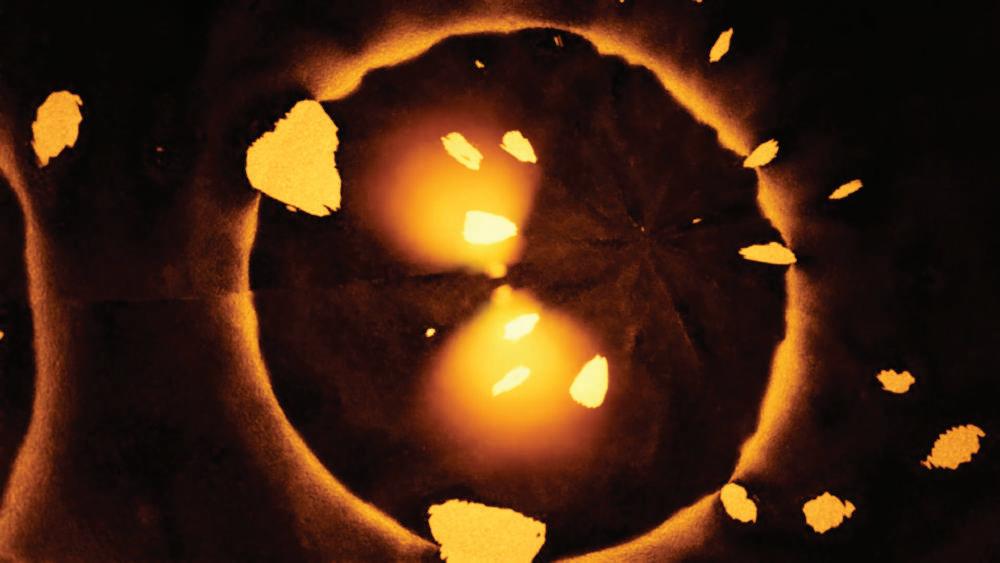
Life on Earth?, 2022-ongoing speculative video/film CGI work – in progress collabotation with
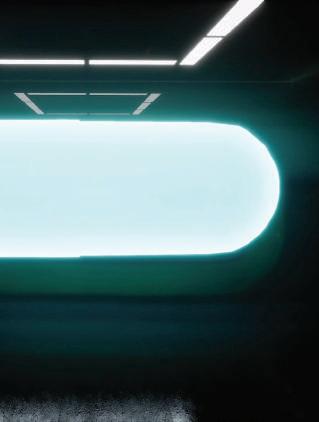

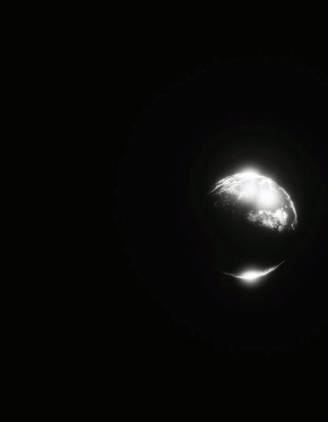
Authors’ Statement of Intent
As technological advancements continue to embolden humankind’s vision to control their own fate, the authors of the animated film Life on Earth? fabulate a future scenario where humanity is made to face up to the consequences of eating “the forbidden fruit” of genetic engineering and colonization of Mars and beyond. The film’s protagonist, Sola, a CGI hybrid—visually a digitally modified mixed-race human of the two authors, who have never met in “real life”—ascends to Mars and resides there ever after and against her wishes, upon taking an experimental drug that promises eternal youth and immortal existence. Not only is she forever banished from Earth, but also her newly exalted status of immortality commands an ex-orbitant price that she must pay for her action. Whilst residing on Mars permanently, she watches her loved ones on Earth reincarnate into non-human beings—be they animals, plants, microbes or viruses— and is forced to adopt their individual means and manners of communication to carry on correspondence. Sola represents the contemporary human condition at the crossroads of its existence—bound by space and time, humankind has nevertheless sought to overreach itself, the latest expressions of which being gene editing and space settlement. As scientific advancements continue to promise quantum leaps of human emancipation from existing conditions on Earth, the authors question just what kind of “enlightenment” the advancements are thought to offer humanity if the protagonist is to remain isolated for eternity. Would the sacrifice of happiness and intimacy with her loved ones be worth the daring deed in the first place?
Originating in Europe, the Enlightenment project of the late 17th and 18th centuries and the subsequent Industrial Revolution beginning in the 18th century accelerated the process of the secularization of morality and society worldwide, which, along with a sense of empowerment, have led to humanity’s gradual dissociation from early mythology and religious teachings that often show humankind’s humble place in the greater cosmic order. Whilst this is not explicitly stated in the plot of the film, the authors wish to (re)awaken human respect (rooted in a fear of the unknown) for nature by lightly referencing David Attenborough’s nature documentary Life on Earth and the ancient Chinese mythology of Chang’e, the protagonist of which, like Sola, flies to an unknown space from all that is familiar. The question mark following the title Life on Earth signals a collective crisis and prompts an examination of the “solutions” being proposed today.
Synopsis
Sola, the film’s heroine, works for a biotech company, which is developing Agelokk, a pill that promises eternal youth and health. In an experiment one day, Sola makes a concoction using the most precious ingredients one could find on Earth. Unhappy with her daily life, Sola decides to take the experimental pill herself despite the unknown consequences. Upon taking it, Sola’s body becomes ethereal, and she finds herself—outside of her control—ascending to Mars. As a consequence, she is banished from Earth and must reside primarily on Mars from now on. From Mars, she manages to establish contact with her loved ones via satellite communication. Their humanly intelligible correspondence—whether by letter, voice or video—carries on until the inevitable deaths of her Earth-bound family and friends. Yet from Sola’s newly elevated position, she watches—from a distance—each of her loved ones pass through death and reincarnate into completely new beings, some of which are on the verge of extinction, while others are in a trajectory of rapid proliferation. Each of these reincarnations forces Sola to use new modes of communication alien to her, be they with periodical cicadas, flying fish or St. John’s wort. In her acquired state of nirvana, observing a transforming Earth is at once a lonely and enlightening business.
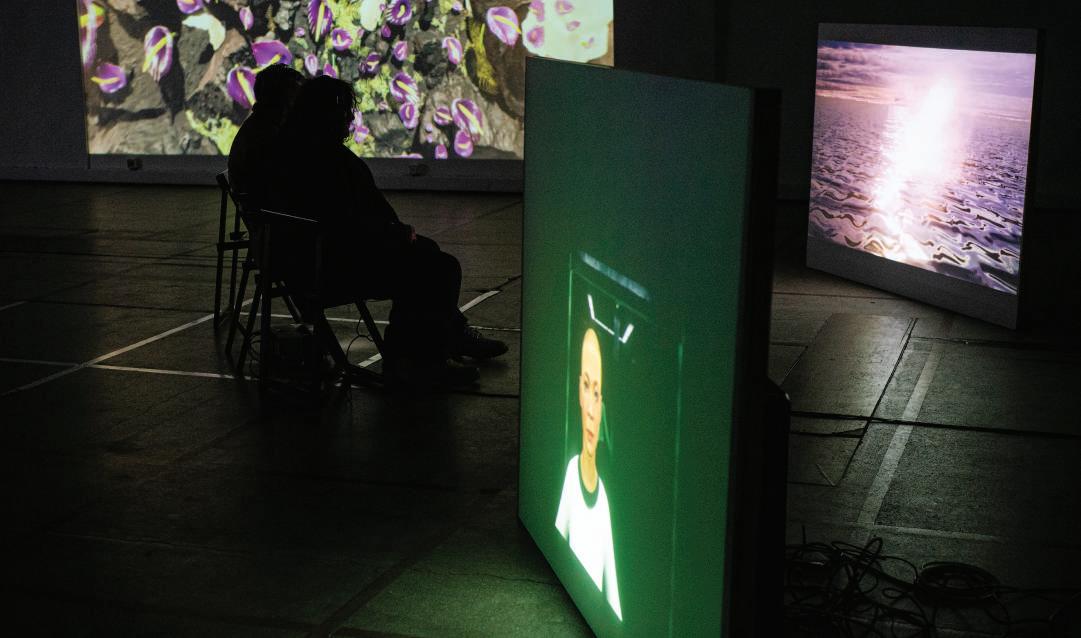
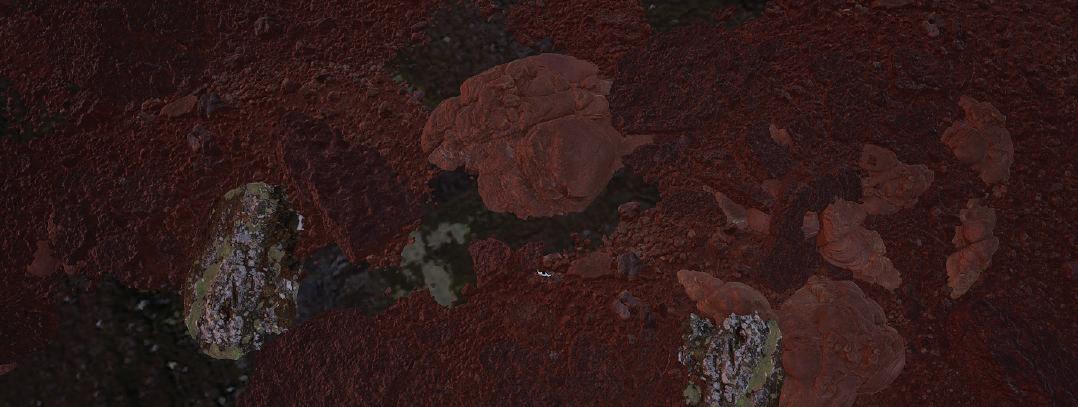
The sound of a dying bee, 2022
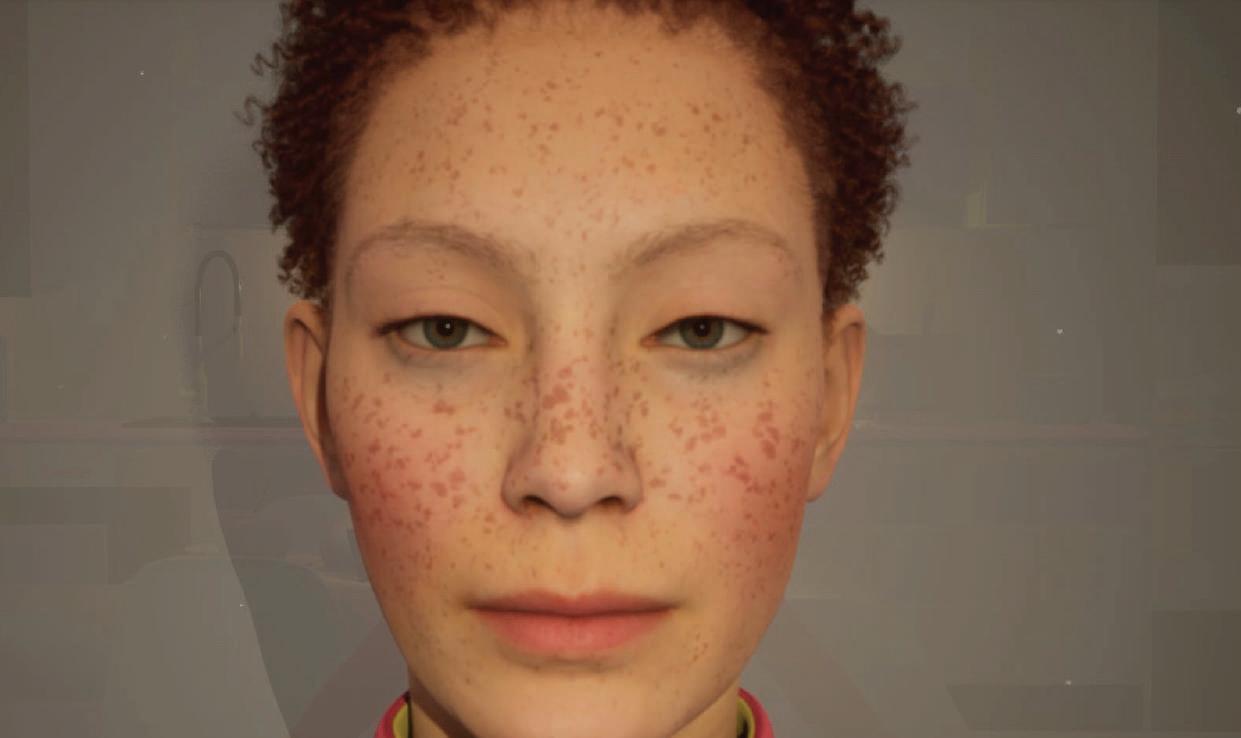
The speculative work is one poetic technology, designed to obstruct differences between temporality and experience of the subject given. It speaks about a time that already happened but projected into the future. As if speaking from the belly of the Earth, the main protagonist is sending letters to her unborn child som time in the future, set for the year of 2038, when the next cycle of the periodic Cicada is about to take place. It shows one single letter in a form of a short video, taken out of context from many. The letter stands alone as an apostrophe text.
watch: here
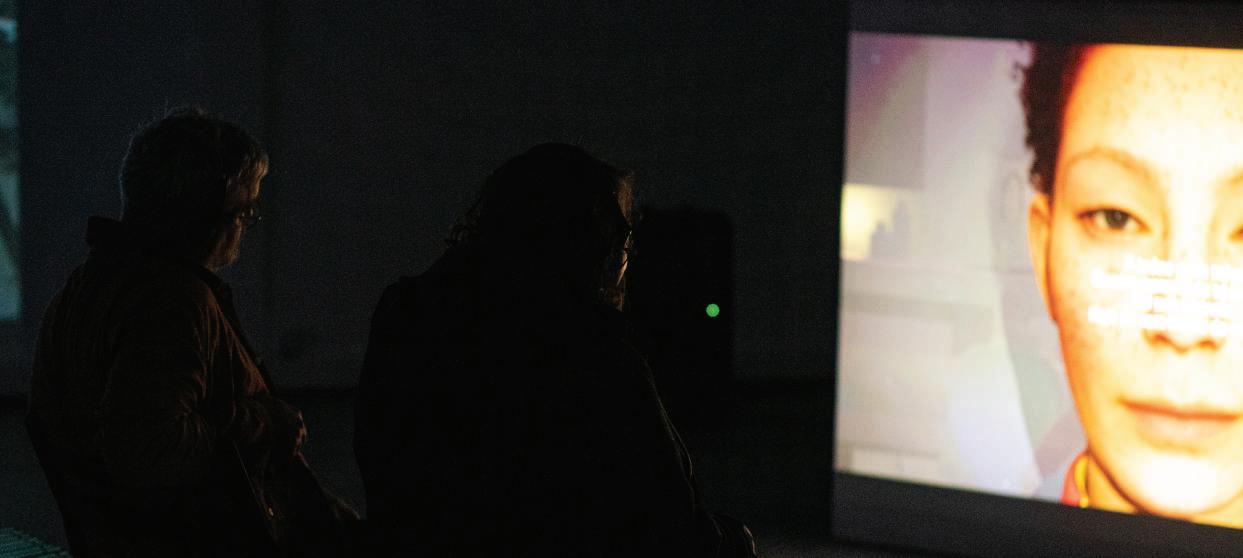
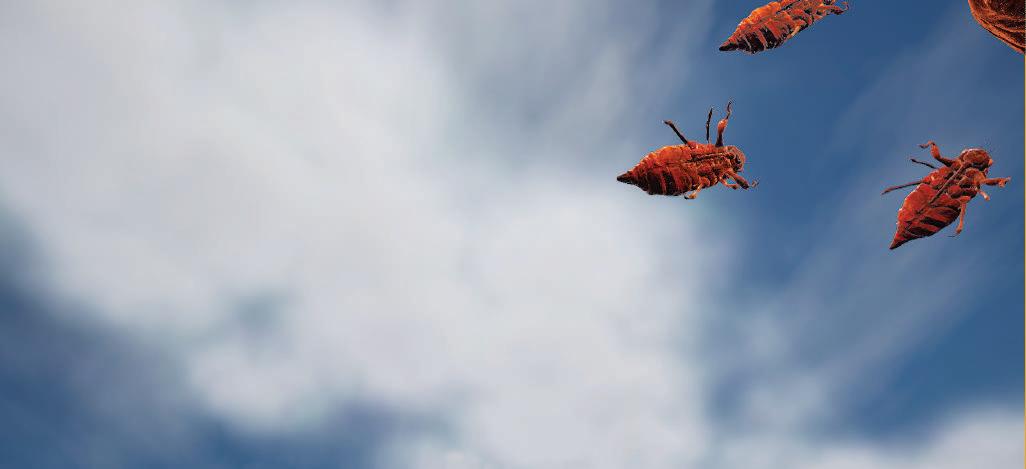
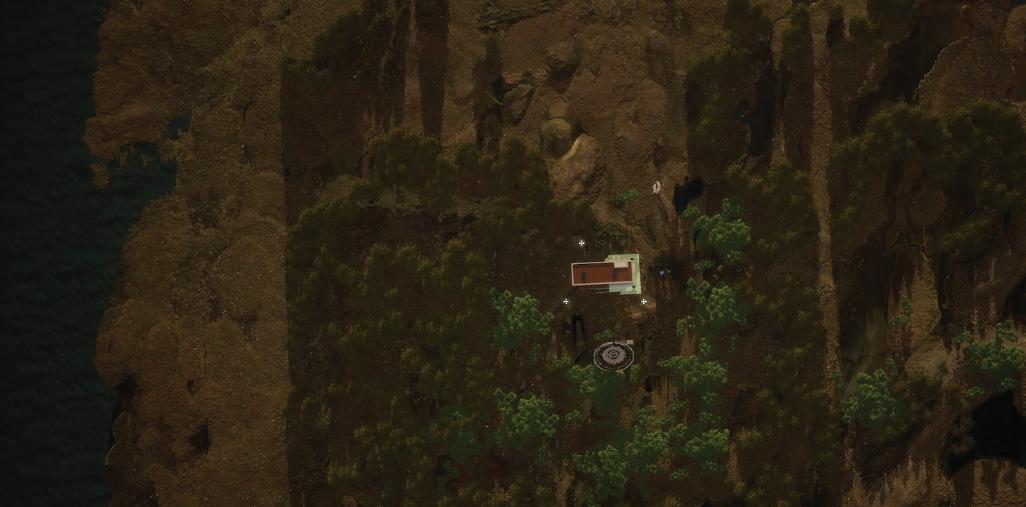
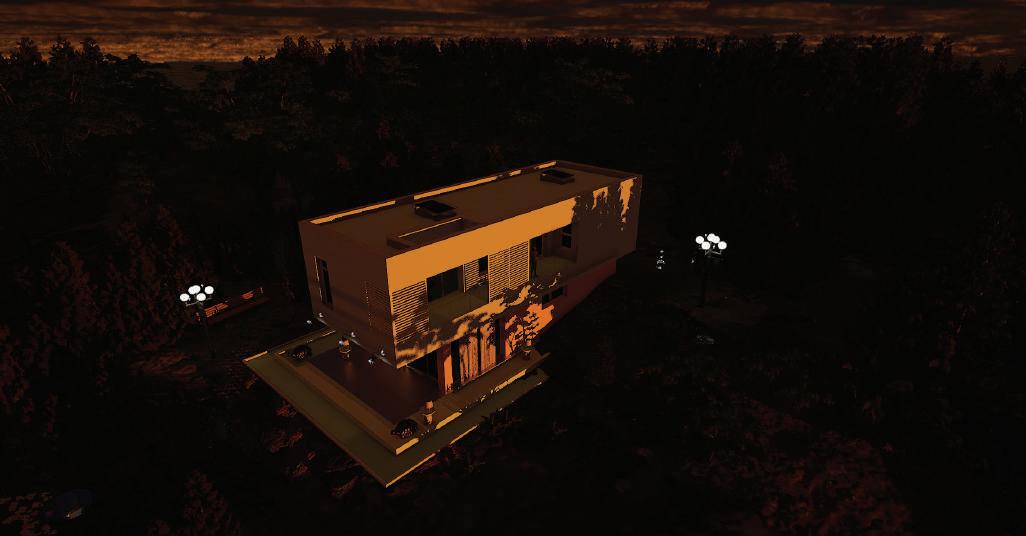
Lichen encounters, 2022
speculative interactive poetic website
Creators:
Sanja Anđelković, Roksana Niewadzisz, Alisi Telengut Dovile Aleksaite, Doerte Weig
Web Development: Phil Clausen
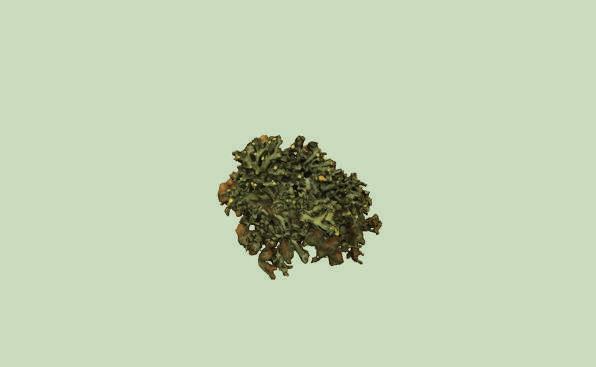
The work “Lichen Encounters” deals with the themes and questions of the qualities of intra-activity and hybridity with the vegetal world. It is particularly curious about bodily experiences of othering with plants and fascinated by the specific hybrid nature of lichens, as composites of fungus, algae and cyanobacteria. Through the work we explore how such processes of co-bodying can contribute to generative human futures and symbiotic cohabitation.
The work as a whole enacts as different chapters around the same theme and it includes a particular Plant Meditation; performative reading of an original collaboratively written Lichen Manifesto, and an audiovisual CGI space consisting of a gathered dataset of 3D images and sounds generated into a specific interactive website.
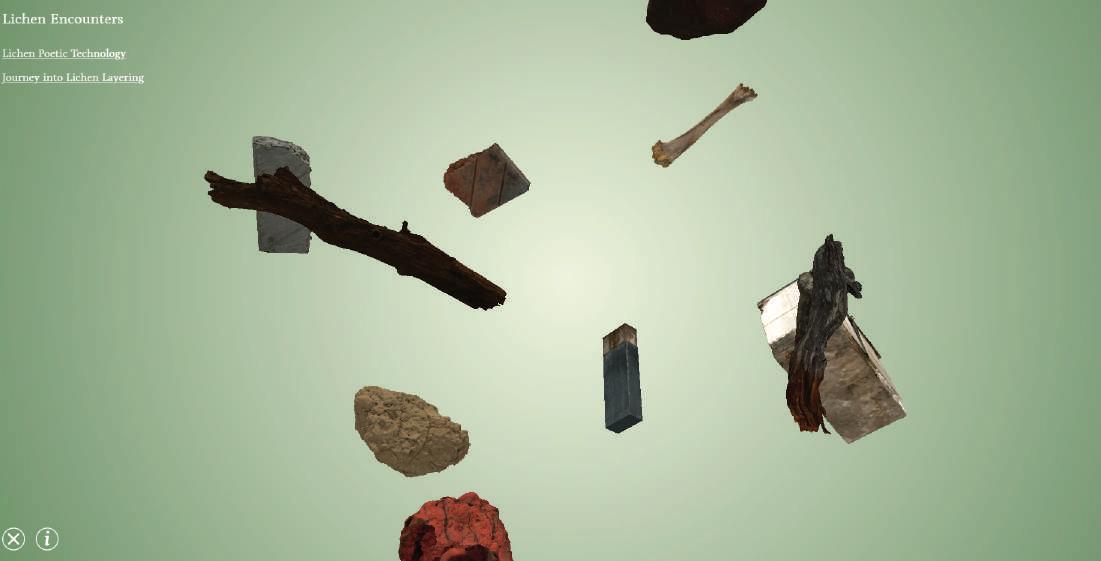

The work has been comissined by the Filmuniversität Babelsberg KONRAD WOLF, Potsdam, Germany.
enter website: here

Anatomy of a Fatberg, 2021
interactive speculative forcast website - under maintanance
An instant game of chance created with Andrea Palašti, Stefana Janićijević and Jovana Pešić; web development and design by Luka Lopičić, Vanja Novaković
Winner of the a+s+cpn selection 2021, produced for the exhibition art+science 2021, exhibited at The Museum of Science and Technology, Belgrade, Serbia.
Organisation and production: Center for Promotion of Science
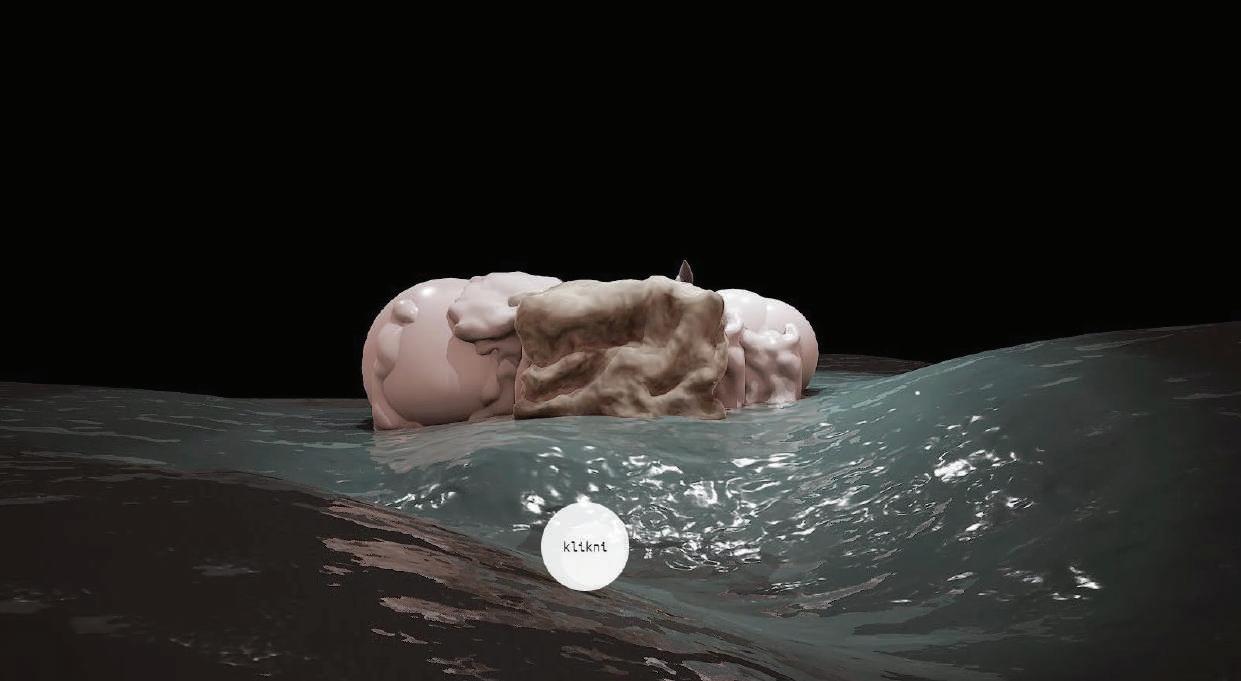
It all started with a first flush, or some would say, before the actual flush. A small miscellaneous moment and lack of attention. And so the Fatberg was born from the depths of human ignorance in the depth of the sewer pipe. The Fatberg is a hybrid species which is neither natural nor cultural, but it lives and grows bigger and stronger each day. The more we feed it, the more it breathes and detects. It knows exactly who we are. It controls us, even though we didn’t know it even existed.
Taking the Fatberg as a metaphor of a new artificially created intelligence, the work represents an instant game of chance, where the only winner is the Fatberg itself. By clicking the “flush” button, the Fatberg is fed by our digital database: combining wastewater quality data and a vast number of analytical data taken over from the Statistical Office of the Republic of Serbia. It is a collection of our own heterogeneous by-products collected for over 20 years, from data on microbes to astrophysical measurements, toxins in the Danube, but also data on employment, bank accounts, calls within the telecommunications network, data on newborns, divorces and drug addicts in our country, amount of food consumption, on the value of dinar, on housing, on migration and tourists, on city traffic etc. Everything that makes life around us and everything that leaves garbage and floats further, refining new data and making possible for the Fatberg to (re)form.
enter website (website currently under maintenance): here
The game was built with data mining technique and machine learning algorithm K-Means Clustering, but with a chaotic twist, whereas each dataset coming from a different source are accidentally and stochastically connected. Although the outcome of the game is always in favour of the Fatberg - being always fed by our “flushes” and continually reformed by our data-garbage, it also reveals something very peculiar about our own interconnectedness within the broader network environment. The algorithm creates groups of clusters and estimates how close the telecommunication calls are to the number of cattle, or how close the pH value of the water is to the traffic congestion, but at the same time, how these clusters depend on a certain type of bacteria found in the wastewater. Fatberg is thus forming a new social behavior between the rich biological, economical, political, medical and cultural databases, opening up a broader understanding of our complex relationship with our waste and its consequences on the ecology. The results of the algorithm are seen each time differently by random generation of data through a 3d diagram illustration in order to analyse, recognize, index and possibly produce speculative objectives on how to minimize the effects of Fatberg by decreasing our waste sources.
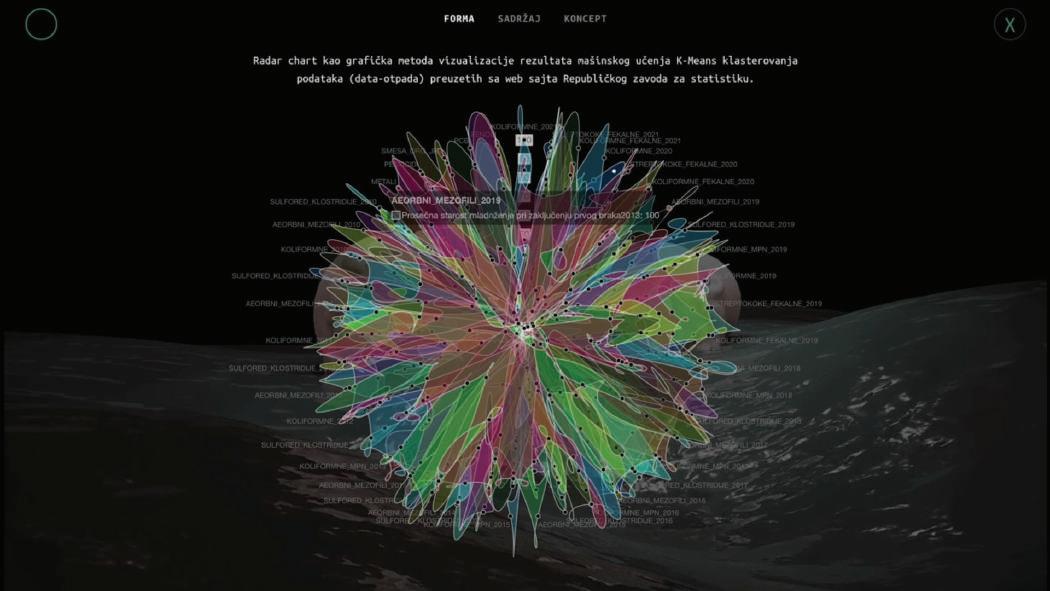
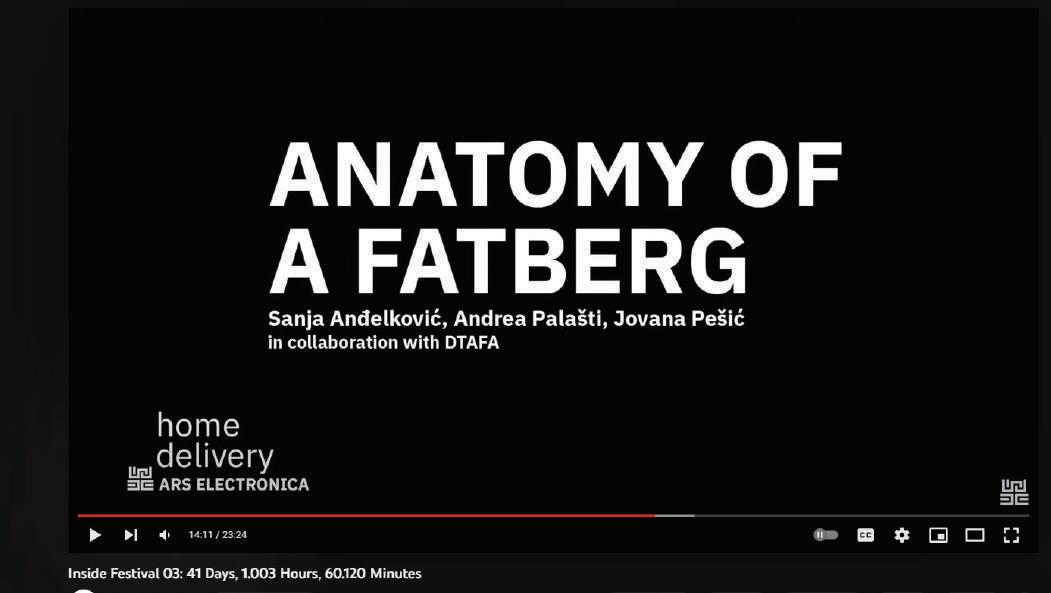
Woodiana.today, 2021 fictional fortune- telling website app
WOODIANA’S TEAM
The Woodiana Oracle cooperates with the Danube Transformation Agency for Agency (Alexandra Fruhstorfer, Lena Violetta Leitner, Ege Kökel, Solmaz Farhang and Andrea Palašti); Sanja Anđelković and Jovana Pešić.
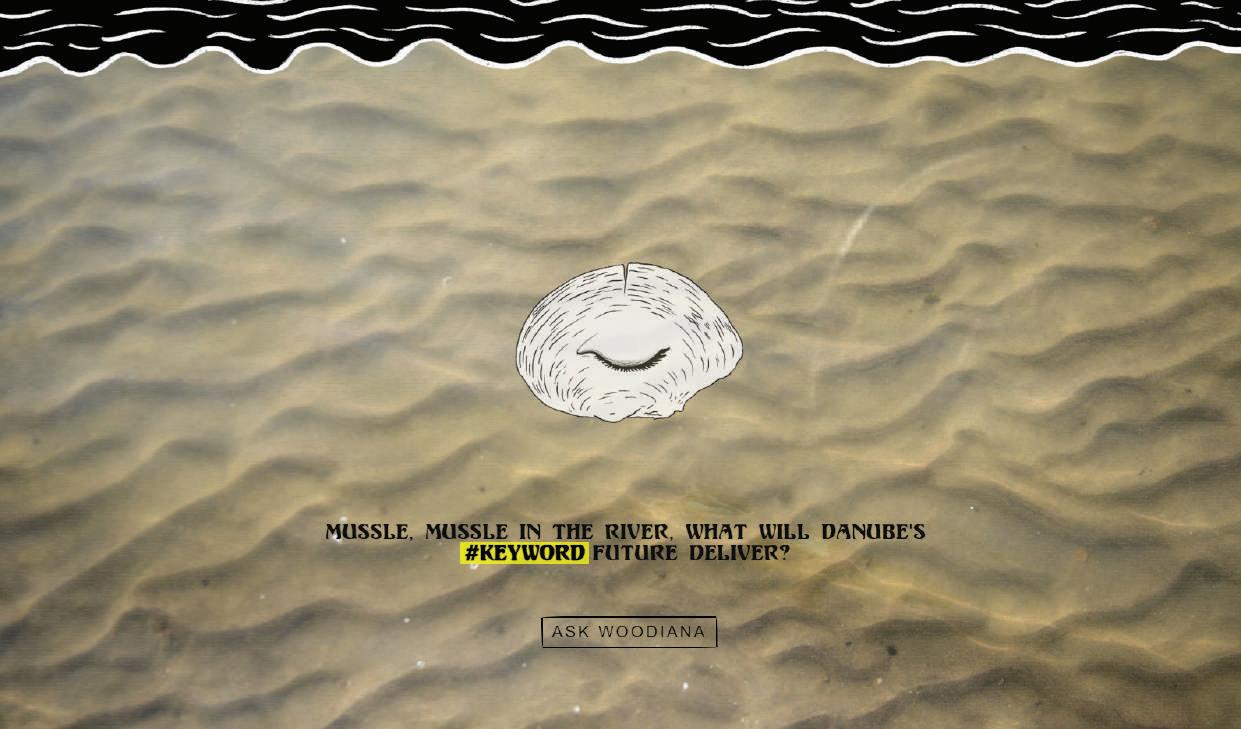
Woodiana.today is an experimental online forecast service developed to save the Danube’s future through speculative fabulation. It is run by Woodiana, a freshwater mussel of the species Sinanodonta woodiana, that was introduced from China, and today she is facilitated by her international team of artists and scientists.
Woodiana uses the latest AI technology to predict the concentration of pollutants in the surface water which then influence her motion, leaving us with some dazzling patterns in the sand like secret symbols. Based on these temporal motion patterns, Woodiana’s speculative forecast bureau - the Woodiana.today, investigates a portfolio of scenarios as reactions to anticipated environmental emergencies that the river Danube might expect in the future.
Woodiana.today reports on the current and upcoming status of the Anthropocene and sketches a variety of speculative futures of the Danubian region. Woodiana.today has been heavily informed by science and scientific water data but interprets it through a dialogue with other agents: economics, politics, art, theory, ai technology, history, speculative fiction, and the role that Danube had played for different cultures as a totemic, spiritual, military and ecological touchstone. But to really understand how Woodiana.today delivers the forecasts, we need to enter the world of Woodiana, we need to dive into the river, search for her trails, and to consult freshwater biologists, ecologists and data scientists.
enter website: woodiana.today

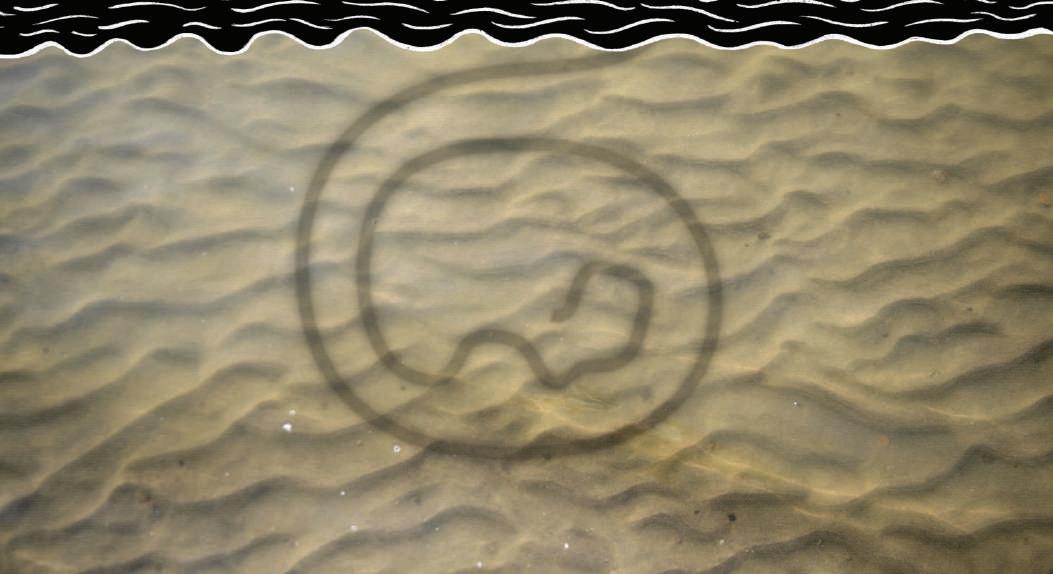

10,9,8,7,6..., 2021

10,9,8,7... is a computer-generated film. Using the format of animation as well as the speculative fabulation through which the ecology of death is narrated, the work 10,9,8,7... offers an immersive experience of the phenomenon of death within a computer-generated reality.
10,9,8,7... was created in response to the destructive relationship of our civilization to nature and thematizes current biological and social syndromes, through digital media. On the other hand, the film questions the need and way of human practice of preserving life.
The work is created as a transdisciplinary research that includes the field of art, sociology, philosophy, theory of culture and medical science (anesthesia and oneirology). The research for the film begins with the study of archival material on the history of anesthesia in the former Yugoslavia, which then symbolically opens a new, parallel, (virtual) dream space about the speculative fouling of different ecologies. The ecology of death (silent carrier of action), which refers to the circulation of matter in nature (but also carries various socio-cultural connotations), has the ability to create new ecosystems around itself, to decompose, to overflow and green the environment.
As this process changed and redefined in various ways during the Anthropocene, the definition of death as a biological phenomenon can no longer be viewed as something that is only part of a natural ecosystem and the circulation of matter in nature. Various biological mutations have occurred with the development of technology, intrusion and excessive production of unnatural materials (synthetics, plastics), as well as their exploitation. Unnatural materials have the ability to infiltrate the environment and are not subject to change, but are carriers of change. Ideas that appear in addition to the idea of the ecology of death and are hyperobjectivized, are ideas about home, environmental protection, biology, the current political situation ... etc.
The speculative fable of the film takes place through the visualization of dreams under the action of anesthesia before surgical procedures - operations, within which the motif of death appears with various other existential issues. In this way, the film seeks to merge historical / archival artifacts with science fiction and ask the question: How is the existence of death mutated and romanticized to explain hyper-objects in the world of technometabolism?
watch: here
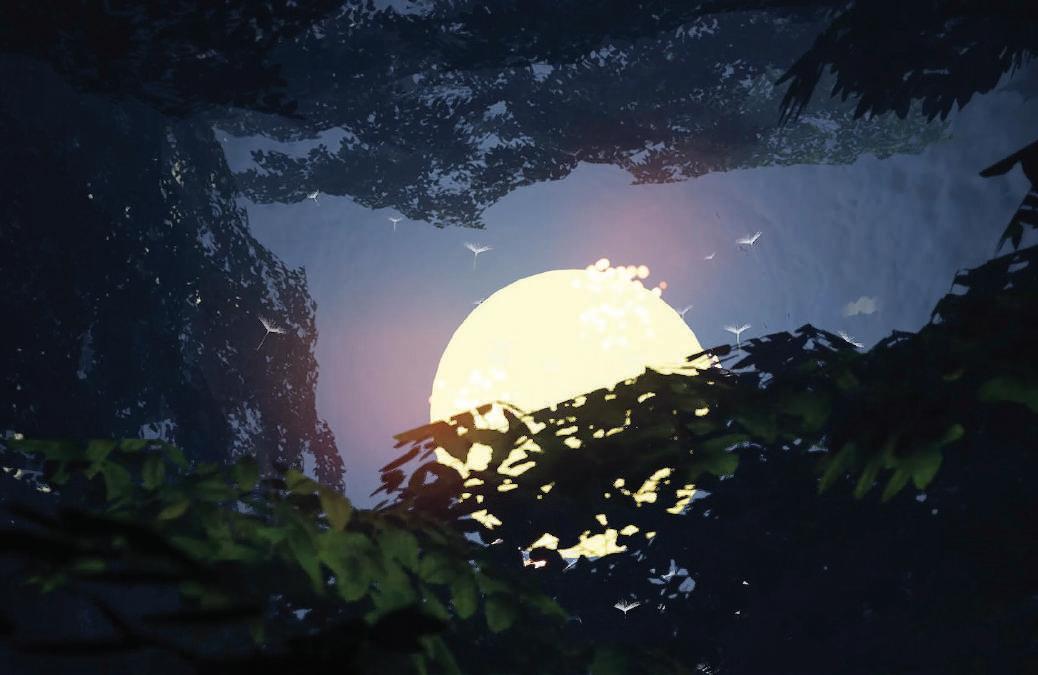

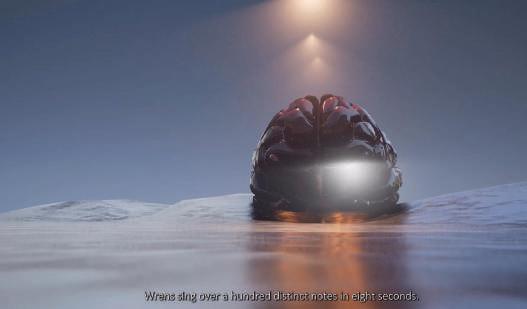
Different Kind of Heaven, 2020 CGI
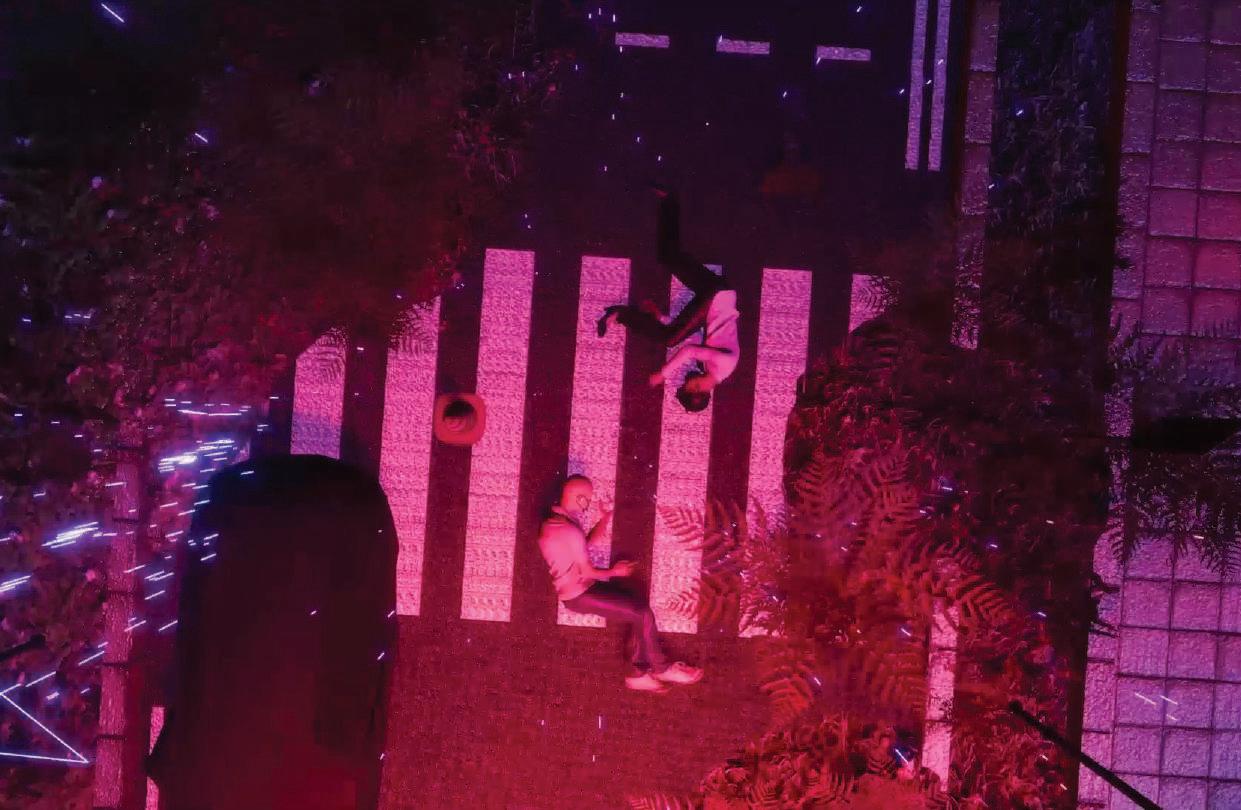
Different kind of Heaven is a speculative fiction which touches the topic of environmental issues and gently goes through a period of technocracy set in the space of computer-generated images. The plot of the film is set in a (post) pandemic framework and is followed by the story of Arum (the Titan Arum-”Corpse flower”), or what is respectively left of him.
CREDITS
Created/written/edited by Sanja Anđelković
Executive Producer - Šopa Gallery, Košice, Slovakia
Production Supervisor - Petra Houškova
Animation/Architecture - Michal Plodek
Music - Lav Kovač
Sound Design - Lav Kovač
watch: here

